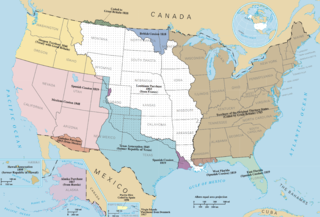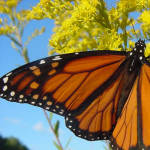Frankenstein was published by Mary Shelley in 1818. Children can read the book online at: Project Gutenberg.
 United States flag with thirteen stripes and a star for each state was adopted in 1818. Prior to this time, a star and stripe was added each time a state was admitted to the Union. By 1817 the flag had twenty stripes and twenty stars, and the flag was becoming cumbersome. Samuel Chester Reid, a naval hero of the War of 1812, suggested the stripes remain at thirteen, and the number of stars change as new states joined the union. Children could view a timeline of the American flag at: http://www.ushistory.org/betsy/flagfact.html.
United States flag with thirteen stripes and a star for each state was adopted in 1818. Prior to this time, a star and stripe was added each time a state was admitted to the Union. By 1817 the flag had twenty stripes and twenty stars, and the flag was becoming cumbersome. Samuel Chester Reid, a naval hero of the War of 1812, suggested the stripes remain at thirteen, and the number of stars change as new states joined the union. Children could view a timeline of the American flag at: http://www.ushistory.org/betsy/flagfact.html.

Changes from Treaty of 1818
Treaty of 1818 was signed by the United States and the United Kingdom. Among other decisions, the treaty stated that the 49th Parallel would define most of the border between Canada and the United States. Older children can peruse the treaty at: Treaty of 1818.

Illinois Flag

Monarch Butterfly
Illinois became the twenty-first state of the United States in 1818. Its name derives from the word iliniwek, meaning tribe of the superior men. The state’s nickname is the Prairie State. While Springfield is the state capital, Chicago is a very large transportation center for rail, air, and water. Springfield was the site of the famous Lincoln-Douglas debates. Illinois still grows large amounts of corn and soybeans, but it also has deposits of coal and gas. The monarch butterfly is the state insect. Children could visit an Internet site at: Illinois. Monarch butterflies make annual migrations to winter in trees in Mexico, California and Florida. Children could find out more about the monarch butterfly and its migration patterns.

Creation by Sandie
“Silent Night” was performed for the first time in a small Austrian town in 1818. Franz Xavier Gruber developed the melody, and Joseph Mohr wrote the lyrics. The original lyrics are in German, but it has been translated and performed in many other languages. The following site gives more information, as well as the lyrics in both German and English: Silent Night.